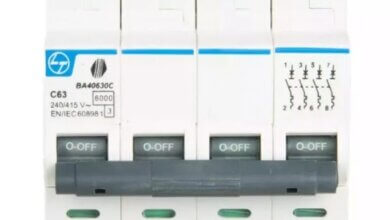Stack Parking Systems: The Future of Efficient Urban Parking
Solving the Urban Space Crunch with Smart Parking Innovation

In today’s fast-paced urban world, parking has become one of the most pressing challenges for city dwellers and planners alike. The growing number of vehicles and the shrinking availability of space have created a serious imbalance, particularly in metropolitan areas. Traditional parking lots can no longer keep up with demand. This is where stack parking systems come into play an innovative, space-saving solution that is changing the game in urban infrastructure.
What Are Stack Parking Systems?
Stack parking systems are vertical car parking mechanisms that allow multiple vehicles to be parked in the space of a single parking spot. These systems work by lifting and stacking one vehicle above another, utilizing vertical space rather than horizontal expansion. Depending on the design, stackers can accommodate two, three, or even more levels of cars.
They are commonly used in commercial complexes, malls, residential societies, hospitals, hotels, and office buildings where ground space is limited. With minimal civil work and quick installation, they are becoming a preferred choice for modern infrastructure.
Why Are Stack Parking Systems Gaining Popularity?
1. Space Optimization
One of the most significant advantages of stack parking systems is their ability to maximize available space. By using vertical space, they reduce the area required for parking, making them ideal for densely populated urban zones.
2. Cost-Effective Development
Constructing multi-level concrete parking structures is a costly and time-consuming affair. Stack parking systems, on the other hand, are modular, relatively affordable, and require less investment in terms of land and construction.
3. Time Efficiency
Drivers no longer need to spend time circling a parking lot searching for an open space. With automated or semi-automated stack parking systems, cars can be parked and retrieved quickly, improving traffic flow and customer satisfaction.
4. Environment-Friendly
Less construction and a smaller footprint mean reduced environmental impact. These systems also lower emissions by cutting down the time cars spend idling or cruising for parking, contributing to cleaner air in congested cities.
5. Safety and Security
Vehicles parked in a stack system are generally more secure from theft, accidental damage, and vandalism since access is controlled. Automated barriers and access cards further enhance the safety features of these systems.
Types of Stack Parking Systems
There are several types of stack parking systems available in the market, including:
• Two-Level Stackers:
Ideal for residential buildings and small commercial spaces, they allow two cars to be parked one above the other.
• Three-Level Stackers:
These systems are perfect for larger facilities and can accommodate more vehicles in the same footprint.
• Hydraulic Stackers:
Operated via hydraulic lift systems, these are user-friendly and require minimal energy, making them efficient and sustainable.
• Fully Automatic Stack Systems:
These systems offer completely automated parking and retrieval with no manual involvement, suitable for high-end commercial and residential projects.
Applications of Stack Parking Systems
These systems are widely used across:
- Residential complexes
- Shopping malls
- Airports
- Hospitals
- Office buildings
- Hotels
- Stadiums
- Exhibition centers
Wherever space is at a premium, stack parking systems offer a flexible and effective solution.
Overcoming Urban Parking Challenges
The need for smart parking solutions has never been greater. Urban planners, real estate developers, and facility managers are under constant pressure to optimize land usage while meeting the growing demand for vehicle parking. Stack parking systems serve as a bridge between these opposing needs by offering a scalable and intelligent solution.
As cities grow and land becomes more scarce and expensive, traditional parking models will continue to fall short. The transition to modern systems like stack parking is not just a matter of convenience, but a necessity for sustainable urban growth.
Maintenance and Operation
Modern stack parking systems are designed for low maintenance. Routine checks and servicing of hydraulic components and safety mechanisms ensure smooth operation over time. With the advancement in technology, many systems now feature remote monitoring and diagnostics, which help in detecting and resolving issues before they become problematic.
Government Initiatives and Urban Planning Support
In many countries, governments are offering incentives for the installation of space-saving parking systems in both private and public infrastructure. This includes subsidies, fast-track permissions, and inclusion in smart city initiatives. Urban planners are now incorporating stack parking systems as part of their infrastructure design to ensure smarter traffic flow and more efficient land use.
In an age where urbanization is growing at an unprecedented pace, stack parking systems are proving to be a vital solution for sustainable, organized, and efficient vehicle storage. By saving space, reducing costs, enhancing security, and improving user experience, these systems are paving the way for the future of urban living. Whether for residential complexes or commercial infrastructure, adopting this technology is not just a trend it is an essential step toward smarter cities and a more efficient tomorrow.





